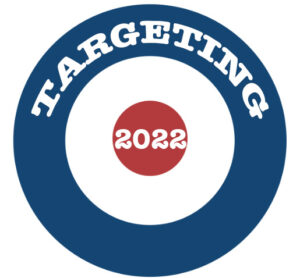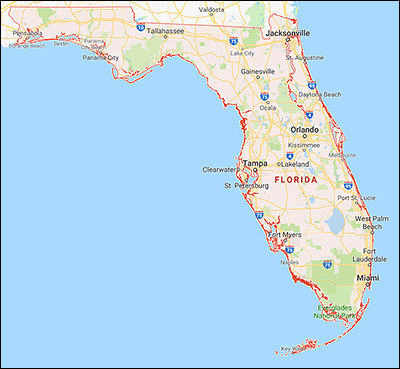By Jim Ellis
Feb. 22, 2021 — Now that the 2020 vote totals are finalized, analysis can be conducted to unearth what clues the election just completed provides for the 2022 cycle.
 In looking at all 435 US House districts, we see that 168 electoral contests were decided with the winner receiving less than 60 percent of the vote. A total of 53 campaigns featured the victor receiving 52 percent or less. These 53 results yielded 27 Democratic wins and 26 for the Republicans. Of those, eight, four for each party, produced a plurality result with neither candidate obtaining majority support. It is these latter eight elections where we concentrate our focus.
In looking at all 435 US House districts, we see that 168 electoral contests were decided with the winner receiving less than 60 percent of the vote. A total of 53 campaigns featured the victor receiving 52 percent or less. These 53 results yielded 27 Democratic wins and 26 for the Republicans. Of those, eight, four for each party, produced a plurality result with neither candidate obtaining majority support. It is these latter eight elections where we concentrate our focus.
A ninth seat, that of Iowa Rep. Mariannette Miller-Meeks (R-Ottumwa), did yield a majority winner, but with a scant six-vote margin, which was obviously the closest election of the 2020 cycle. Democrat Rita Hart is challenging the outcome before the House Administration Committee claiming that 22 uncounted ballots would give her a nine-vote victory, but so far, the situation has not been addressed. It goes without saying that Iowa’s 2nd District will be a major target for both parties in 2022.
Below is a quick synopsis of what one would think are top electoral targets for 2022, but, as you will see, many of these seats will either drop from the competition board or become a lesser target due to redistricting and other factors.
IA-3: Rep. Cindy Axne (D-Des Moines) – 48.9%
Rep. Axne was re-elected to a second term in a virtual rerun of her 2018 campaign against then-Rep. David Young (R). As one of four top Iowa Democratic office holders, rumors are already surfacing that Rep. Axne could run for the Senate or governor, particularly if octogenarian Sen. Charles Grassley (R) decides to retire. Axne is not closing the door on a statewide run.
If she does run for the Senate or challenge Gov. Kim Reynolds (R), a 3rd District congressional race becomes very different. Additionally, it appears that this Des Moines-anchored seat will have to yield approximately 60,000 residents to the adjacent seats in redistricting. The three other Hawkeye State CDs all need more population, from between 5 and 40,000 people per seat. Losing this many 3rd District inhabitants could make the seat less Democratic depending upon how the lines are drawn.
Iowa has the reputation of having the fairest redistricting system. A state legislative committee staff is given authority to draw maps based upon the straight census numbers without deference to the incumbent’s political standing or personal residence. The legislature, without amendment, must then approve or disapprove of the committee staff’s new map.
Regardless of the redistricting outcome, the IA-3 race again promises to be a national congressional campaign.
MN-1: Rep. Jim Hagedorn (R-Blue Earth/Rochester) – 48.6%;
MN-2: Rep. Angie Craig (D-Eagan) – 48.2%
The two plurality Minnesota seats will undergo drastic redistricting changes as their state appears set to lose a CD in reapportionment. With the 1st District requiring more than 125,000 additional inhabitants and the 2nd as many as 90,000, the two southern Minnesota seats will look very different in 2022. Additionally, with the legislature being the only one in the country where each political party controls one legislative chamber, the configuration of the next congressional map could be drawn in many different ways.
Obviously, both Reps. Hagedorn and Craig are in vulnerable political situations, with the former wanting to see more Republicans added to his district, while the latter needs an influx of Democrats coming her way.
Regardless the redistricting picture, these two seats will again likely be prime electoral targets.
NV-3: Rep. Susie Lee (D-Las Vegas) – 48.7%
Nevada’s 3rd Congressional District has been the site of close elections throughout the previous decade. Containing part of southern Las Vegas, the seat covers all of the state’s southern triangle region that lies between California and Arizona.
Nevada will not gain a seat in this year’s reapportionment as it has in the past two census decennials. There will be significant movement among the districts, however, with the 3rd being the prime focus. The latest population figures suggest that CD-3 will have to shed approximately 90,000 residents to other districts.

 Dec. 3, 2019 — Now that two states have already completed their congressional candidate filing (Alabama and Arkansas) and five more are scheduled for December including Illinois, which closed yesterday, it is time to begin to ascertain where US House politics might reasonably stand right now.
Dec. 3, 2019 — Now that two states have already completed their congressional candidate filing (Alabama and Arkansas) and five more are scheduled for December including Illinois, which closed yesterday, it is time to begin to ascertain where US House politics might reasonably stand right now. 
